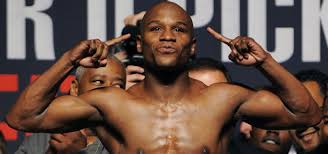
Fiscal policy refers to the use of government expenditure, tax, and borrowing activities to achieve economic goals. Monetary policy refers to central bank activities to control the supply of money. Their goals are maximum employment, stable prices, and moderate long-term interest rates.
The Functions of Money
Money performs three basic functions.
• It serves as a medium of exchange to buy and sell goods and services. Money simplifies and reduces the costs of transactions.
In the absence of money, a barter economy would exist. Acquiring a belt, for example, would entail finding a belt maker who happened to want what you had to offer in exchange, making transactions tedious, enormously costly, and inefficient.
Money permits us to realize the enormous gains from the specialization, division of labor, and mass-production processes that underlie our modern standard living.
-
It is used as an accounting unit to compare the value and cost of things. As a unit of measurement, like a centimeter, money is used by people to post prices and keep track of revenues and costs.
-
It provides a way of storing value to allow the movement of purchasing power from one period to another. Although it is not the only way of storing value, it is the most liquid of all assets, due to its function as the medium of exchange. However, many methods of holding money do not yield an interest return and the purchase power of money will decline during a time of inflation.
The Money Creation Process
Reserves are the cash in a bank's vault and deposits at Federal Reserve Banks. Under the fractional reserve banking system, a bank is obligated to hold a minimum amount of reserves to back up its deposits. Reserves held for that purpose, which are expressed as a percentage of a bank's demand deposits, are called required reserves. Therefore, the required reserve ratio is the percentage of a bank's deposits that are required to be held as reserves.
Banks create deposits when they make loans; the new deposits created are new money.
Example
Suppose the required reserve ratio in the U.S. is 20%, and then suppose that you deposit $1,000 cash with Citibank. Citibank keeps $200 of the $1,000 in reserves. The remaining $800 of excess reserves can be loaned out to, say, John. After the loan is made, the money supply increases by $800 (your $1,000 + John's $800). After getting the loan, John deposits the $800 with Bank of America (BOA). BOA keeps $160 of the $800 in reserves and can now loan out $640 to another person. Thus, BOA creates $640 of money supply. The process goes on and on. With each deposit and loan, more money is created. However, the money creation process does not create an infinite amount of money.
The money multiplier is the amount by which a change in the monetary base is multiplied to calculate the final change in the money supply. Money Multiplier = 1/b, where b is the required reserve ratio. In our example, b is 0.2, so money multiplier = 1/0.2 = 5.
Definitions of Money
There are different definitions of money. The two most widely used measures of money in the U.S. are:
-
The M1 Money Supply: cash, checking accounts and traveler's checks. This is the narrowest definition of the money supply. This definition focuses on money's function as a medium of exchange.
-
The M2 Money Supply: M1 + savings + small time deposits + retail money funds. This definition focuses on money's function as a medium of exchange and store of value.
Credit cards are not purchasing power, but instead are a convenient means of arranging a loan. Credit is a liability acquired when one borrows funds, while money is a financial asset that provides the holder with future purchasing power. However, the widespread use of credit cards will tend to reduce the average quantity of money people hold.
Deposits are money, but checks are not - a check is an instruction to a bank to transfer money.
The Quantity Theory of Money
Money Supply (M) x Velocity of Money (V) = Price (P) x Real Output (Y)
-
The velocity of money is the average number of times a dollar is used to purchase final goods and services during a year. It is computed as V = GDP/Money Supply = PY/M. In essence, it is the turnover rate of money. For example, if the nominal GDP is $200 billion and the money supply is $40 billion: V = 200/40 = 5.
- The equation of exchange reflects two ways of viewing GDP: the left side reflects the monetary flow of expenditures on final products and the right side reflects the sum of the price (P) times the output (Y) of each final product purchased during the period.
If both Y and V are constant, then the equation indicates that an increase in money supply will lead to a proportional increase in price level.
This equation of exchange leads to the quantity theory of money, which hypothesizes that a change in the money supply will cause a proportional change in the price level because velocity and real output are unaffected by the quantity of money.
Summary
| status | not read | reprioritisations | ||
|---|---|---|---|---|
| last reprioritisation on | suggested re-reading day | |||
| started reading on | finished reading on |